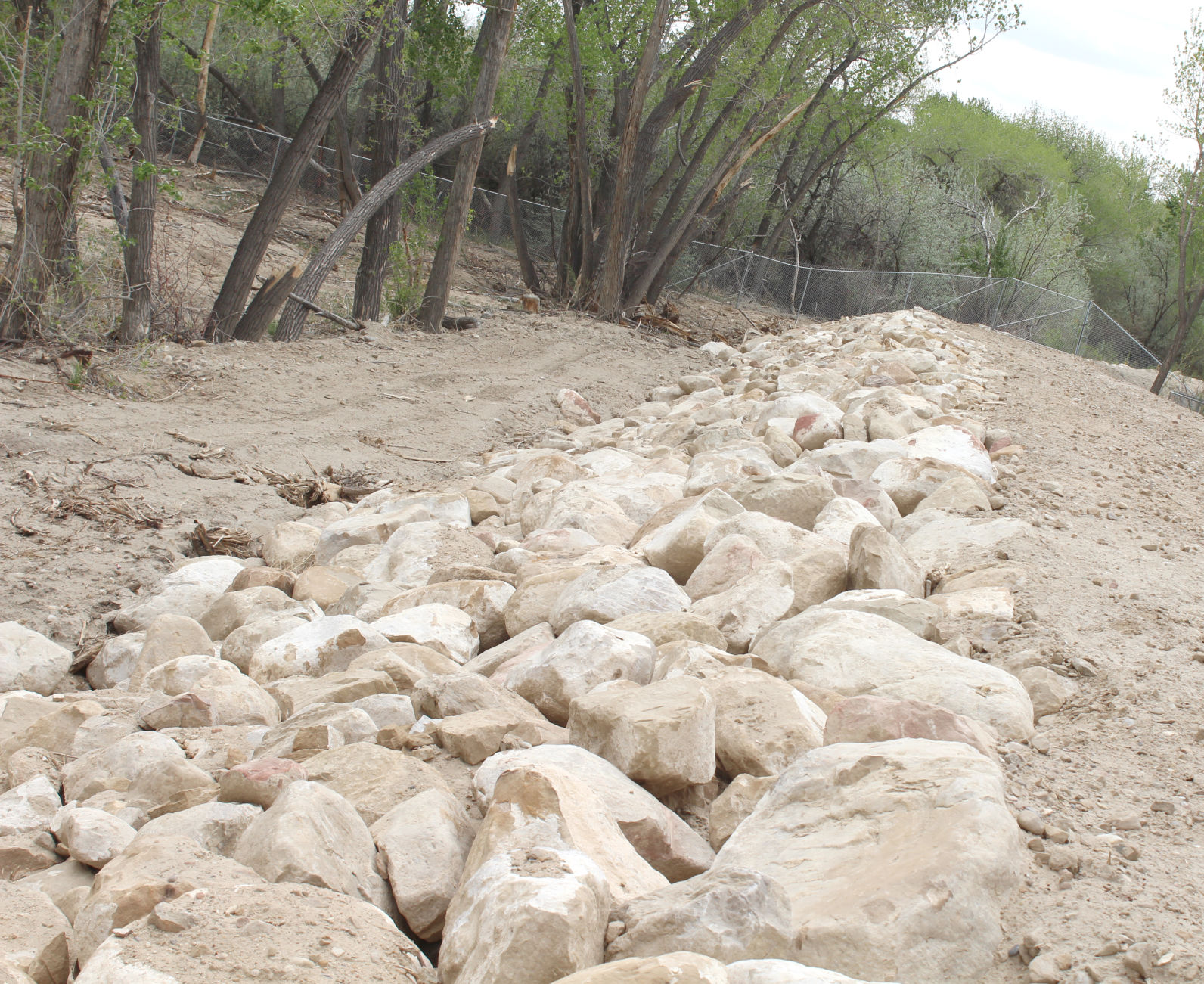A project involving many partners was recently completed in Emery County. The project protects homes, critical infrastructure, and ensures a secure supply of irrigation, municipal, and industrial water for farmers and ranchers, cities and PacifiCorp’s Hunter Power Plant after 2014 flood events which left much damage in several areas of concern.
Earlier in the season the USDA’s Natural Resources Conservation Service celebrated the completion of flood protection projects in Emery County. Those attending the event met for a presentation and then toured the sites of the projects.
“In Emery County, we have enjoyed a great working relationship with the NRCS for many years. Since the Seeley Fire of 2012, we have continuously been involved with the NRCS on various flood protection projects. This most recently completed project, the Cottonwood Creek Project, involved flood protection measures at five different sites along Cottonwood Creek beginning at the Water Treatment Plant west of Orangeville and ending southeast of Castle Dale. Each project was important to protecting critical infrastructure in Emery County,” said Emery County Emergency Manager, Captain Kyle Ekker, ECSO. “We appreciate the NRCS and their willingness to put funding on the ground in Emery County. We have developed an effective working relationship with the NRCS and look forward to future projects with them.”
The Emergency Watershed Protection projects in Emery County stemmed from three flash flooding events caused by severe thunderstorms during June and September of 2014. These flood events caused damage to the newly constructed Adobe Wash Reservoir which provides water to irrigators and the Hunter Power Plant. The flooding also damaged homes in Orangeville and Castle Dale. A water treatment plant serving four communities was threatened. Other infrastructure that was damaged or put in peril included county roads, bridges, irrigation pipelines and utilities.
The EWP program established by Congress responds to emergencies created by natural disasters, such as floods and fires, and protects life and property from any future event of a similar magnitude. Projects are administered by the NRCS, in partnership with local sponsors, usually State or Local governments.
With a combined investment of $3.3 million and 18 months of construction work, Utah NRCS and Emery County restored functions for irrigation, municipal and industrial water infrastructure and provided flood mitigation for homes and other critical infrastructure. The value of these properties is about $9.4 million with business and agricultural losses that could total well over $500,000. The estimated near-term damage reduction of these EWP projects is approximately $3.4 million.
Johansen and Tuttle Engineering designed the protection projects, NRCS specialists obtained the necessary National Environmental Policy Act clearances, and Utah contractors performed the construction.
“The success of this project is due to the great partnership of local landowners, county and federal agencies, and local community leadership to implement projects that will provide benefits for years to come. NRCS has a long history of helping people help the land, and this project was no exception,” said Tim Wilson, NRCS State Conservationist.
Agriculture is a $19 million industry in Emery County, with a very large portion of that revenue tied to water from the canals and irrigation systems protected by the EWP projects. Emery County produces alfalfa, pasture, corn, small grains, and livestock among other things. More than 50,000 acres are irrigated in the county with a large portion of those acres again being irrigated by the canals and irrigation systems protected by these projects. Project Partners included: Natural Resource Conservation Service, Emery County, Emery Water Conservancy District, Cottonwood Creek Canal and Irrigation Company, Castle Valley Special Service District, Orangeville and Castle Dale Cities, PacifiCorp Hunter Power Plant and the Utah Department of Transportation.
The Emergency Watershed Project included: one Major storage and regulating reservoir protected; protection for the Water treatment plant serving Castle Dale and Orangeville; one Floodwater detention basin; six Homes protected; two Public buildings protected;1.15 miles of road protected; four Utilities protected; Debris removal over 2,000 feet and Streambank stabilization covering 2550 feet.
NRCS flood control project complete in county

Flood control along the Cottonwood Creek in Orangeville. Alice Wadley, Staff Writer
